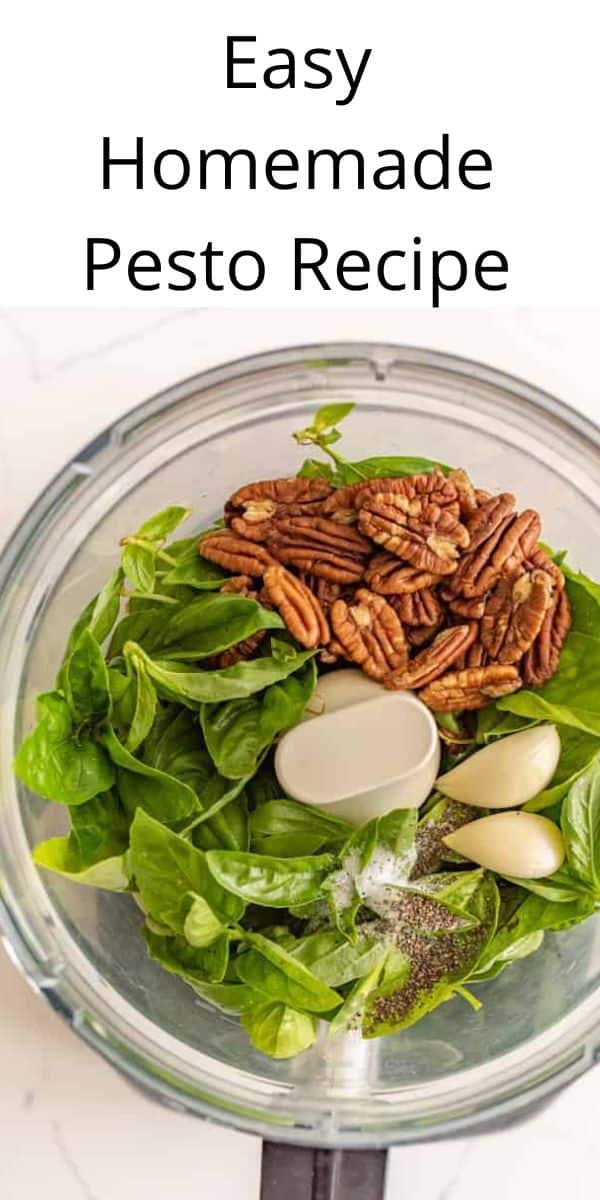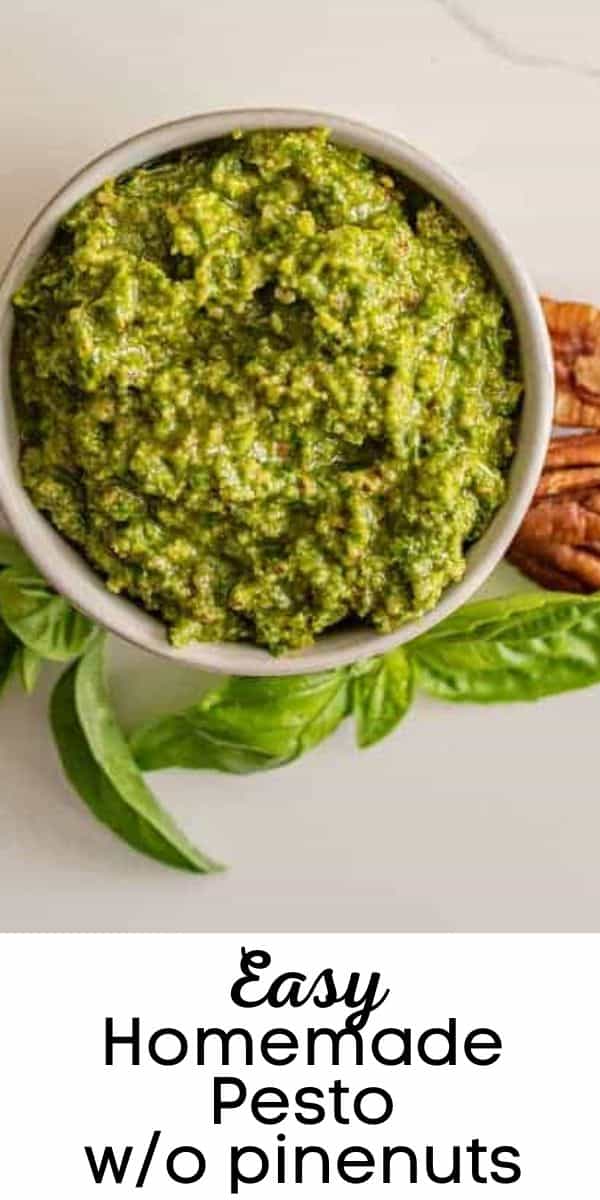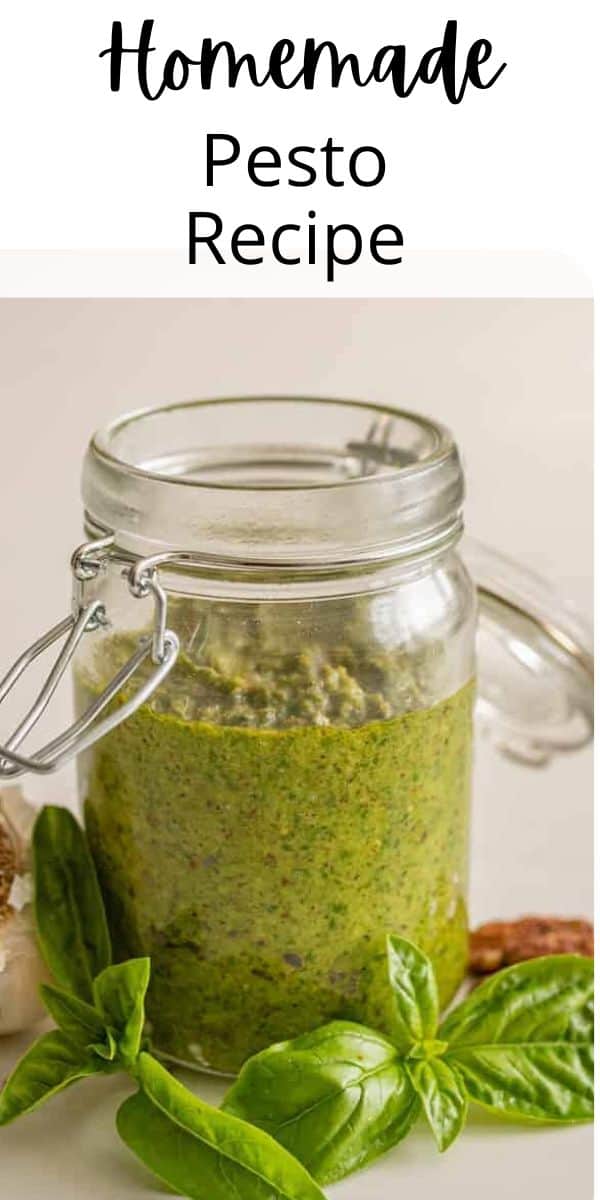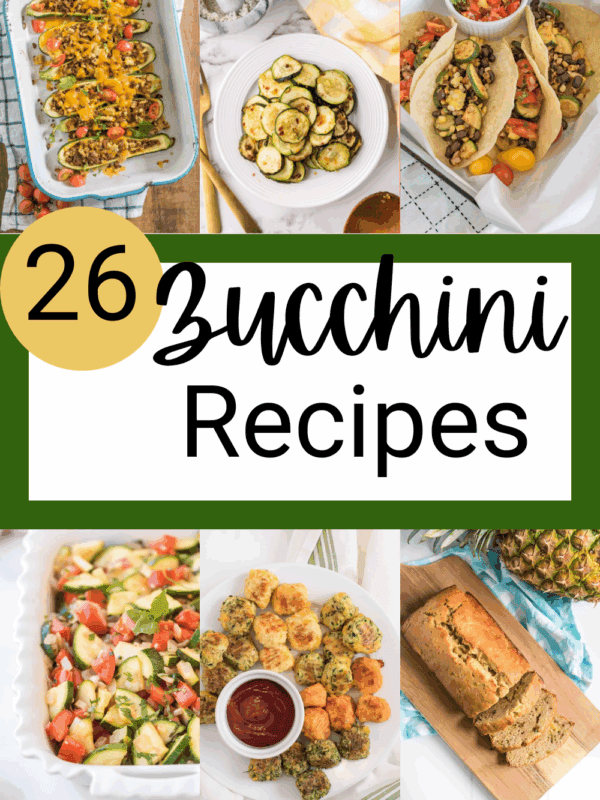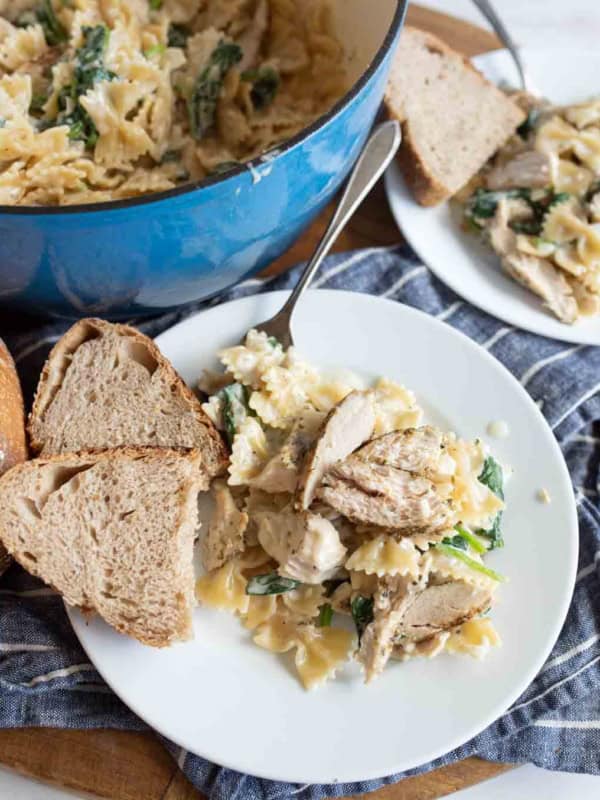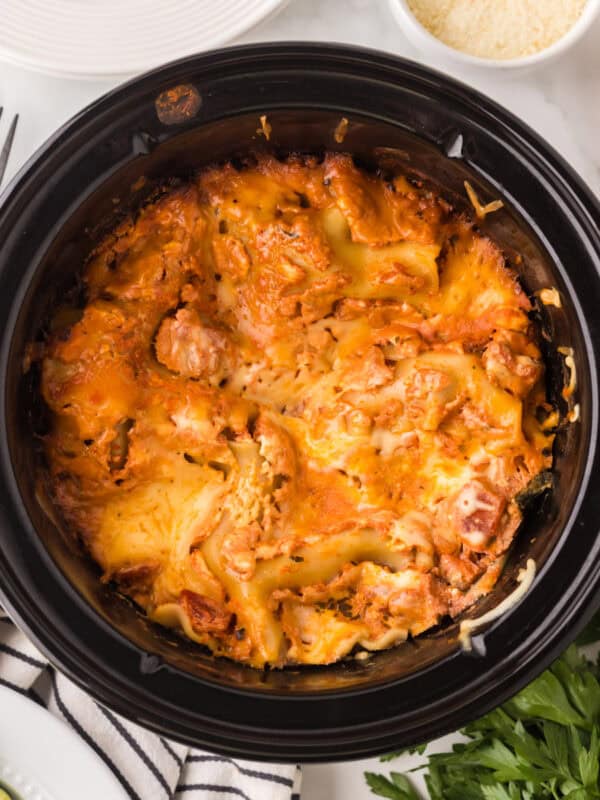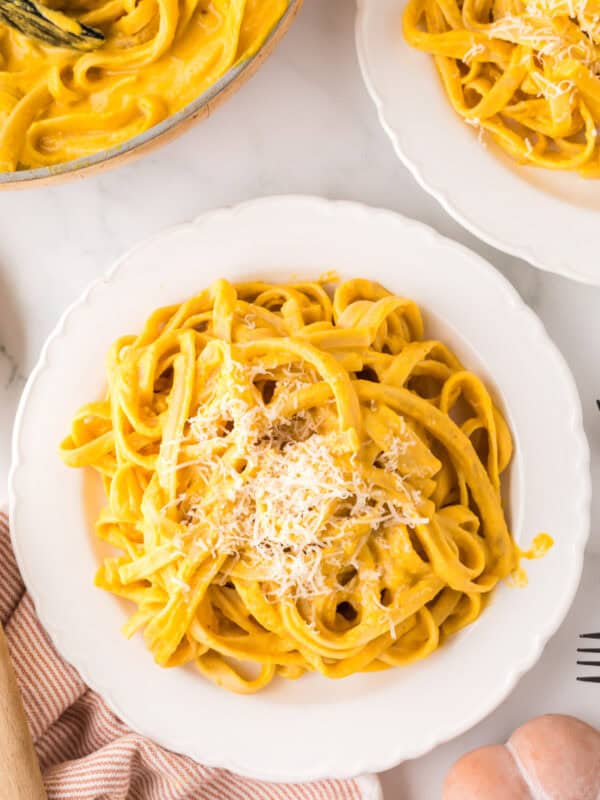This post may contain affiliate links. Please read our disclosure policy.
Homemade pesto is a simple and adaptable recipe that you can use as a marinade, in sandwiches, on pasta, or over roasted veggies. Plus, it’s full of fresh flavors and wholesome ingredients.
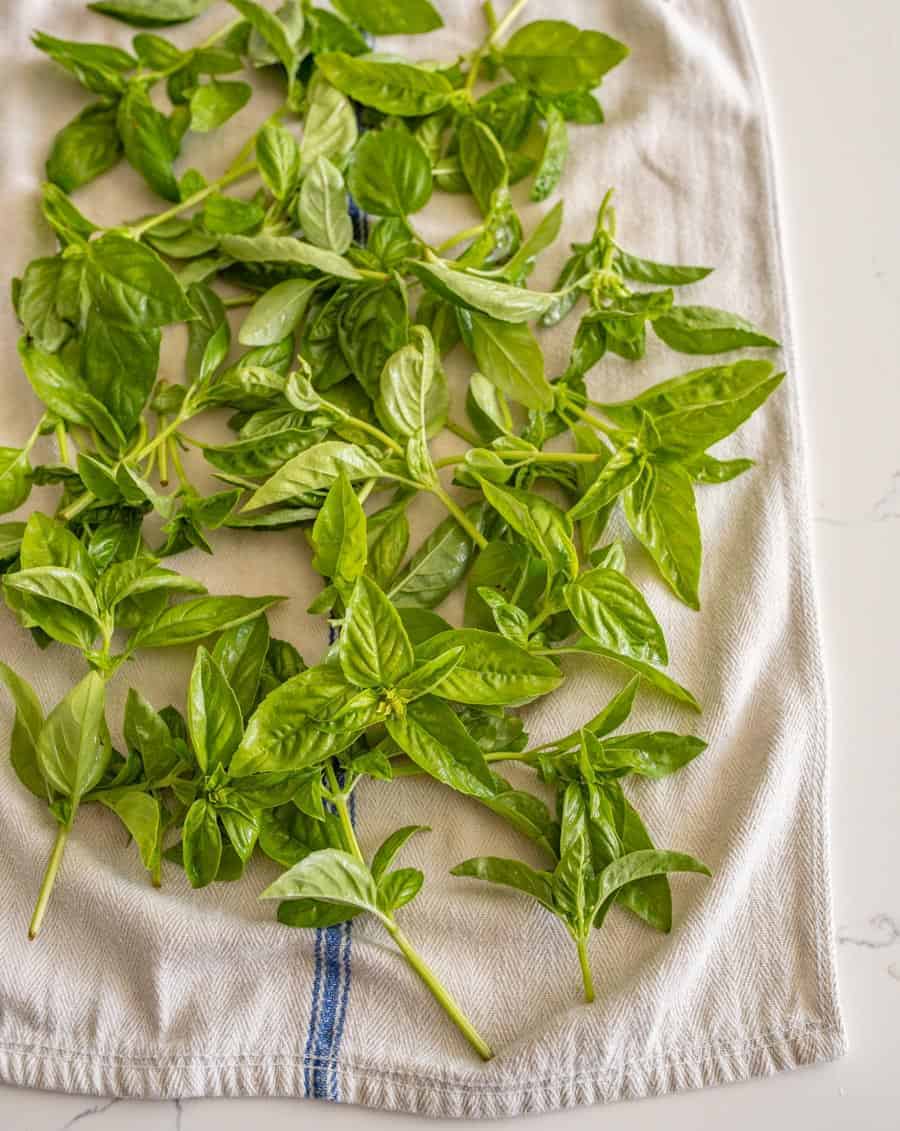
Don’t let anyone tell you that you have to use pine nuts in pesto! It’s actually just as phenomenal with all sorts of other nut varietals, like this version with pecans. I’ve also used almonds, walnuts, and, my favorite, pistachios with much success!
I don’t have anything against pine nuts — they add a subtle nutty flavor and almost creamy texture because they’re so little and blend up smoothly. But they aren’t something I have on hand as often as I have those other kinds of nuts, and they’re expensive as all get out. So, I’d much rather use something that’s more convenient and just as effective!
For more light and bright meals filled with your favorite garden herbs, don’t miss my Quick & Easy Pesto Pasta Salad, Spaghetti Squash with Meatballs and Tomato Sauce, and Garlic and Herb Whole Chicken in the Crock-Pot!
Table of Contents
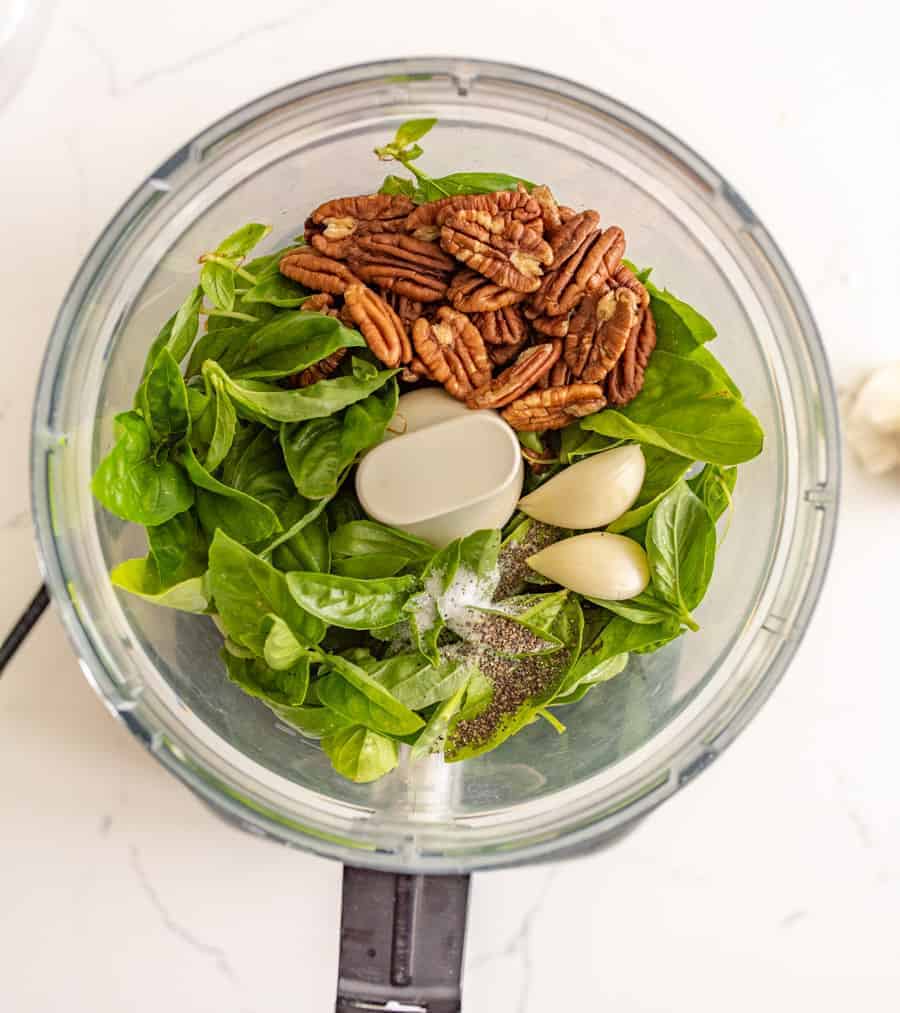
Why You’ll Love This Recipe
- Versatile: I love it on practically everything — use it as a dip for crackers or veggies, a spread for sandwiches, sauce for pasta, or marinade for roasted veggies, fish, or meat!
- Easy to Make: You just put all the ingredients in your food processor or blender and give them a spin. No cooking, no crazy steps – simple as can be.
- Make-Ahead and Freezable: This is such a wonderful recipe to make an enormous batch of when your basil plants are overflowing in warm months (or you can easily find it at the store). Pesto can be store in the refrigerator for several day or you can freeze small containers of it to have on hand.
Ingredients
- Fresh Basil Leaves
- Garlic Cloves
- Pecans
- Parmesan
- Salt and Pepper
- Olive Oil
- Neutral Oil: such as avocado or vegetable oil
See the recipe card below for full information on ingredients and quantities
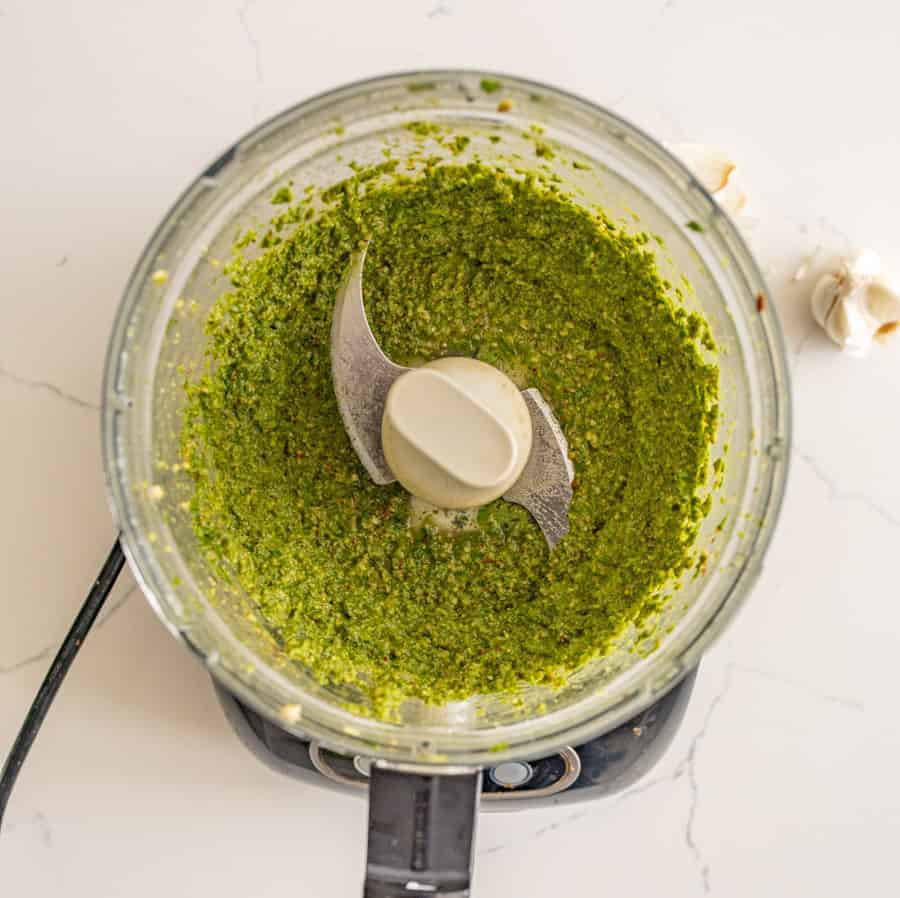
Popular Substitutions and Variations
- You can substitute any nut that you would like, such as walnuts, pistachios, almonds, etc.
How to Make Homemade Pesto
Step #1. Remove any large stems from the basil and place it in the food processor or blender.
Step #3. Blend and add additional oil a little at a time until it forms a paste. Taste and add salt and pepper if needed.
Step #2. Add the garlic, nuts, parmesan, salt, pepper, and olive oil. Blend until it starts to come together, then scrape down the sides.
Step #4. Store, freeze, or serve as desired.
Recipe FAQs
Traditional pesto is made using Italian basil, coarse salt, garlic, extra virgin olive oil, pine nuts, and some sort of grated cheese, like parmesan or pecorino. Like I mentioned above, I like using walnuts, pecans, pistachios, or almonds in place of pine nuts, and I also add a little pepper to mine and it’s divine!
Homemade pesto will last for a good amount of time in the fridge — 7 to 10 days — and much longer frozen, up to 4 or 5 months! That’s why I can’t recommend enough making a whole big batch and then freezing much of it for later use.
You don’t have to toast your nuts when making pesto! It can add a slight smoky flavor that’s very tasty, so if you want to give it a try, just add the nuts to a pan over medium heat and give them a toss with a wooden spoon every 30 seconds or so for about 3 to 5 minutes. Remove them from the heat when you can smell their toasty fragrance.
Pesto can take on a bitterness when there’s a touch too much garlic. Salt and cheese both counteract tart bitterness, so add a pinch of either until the pesto reaches your desired flavor.
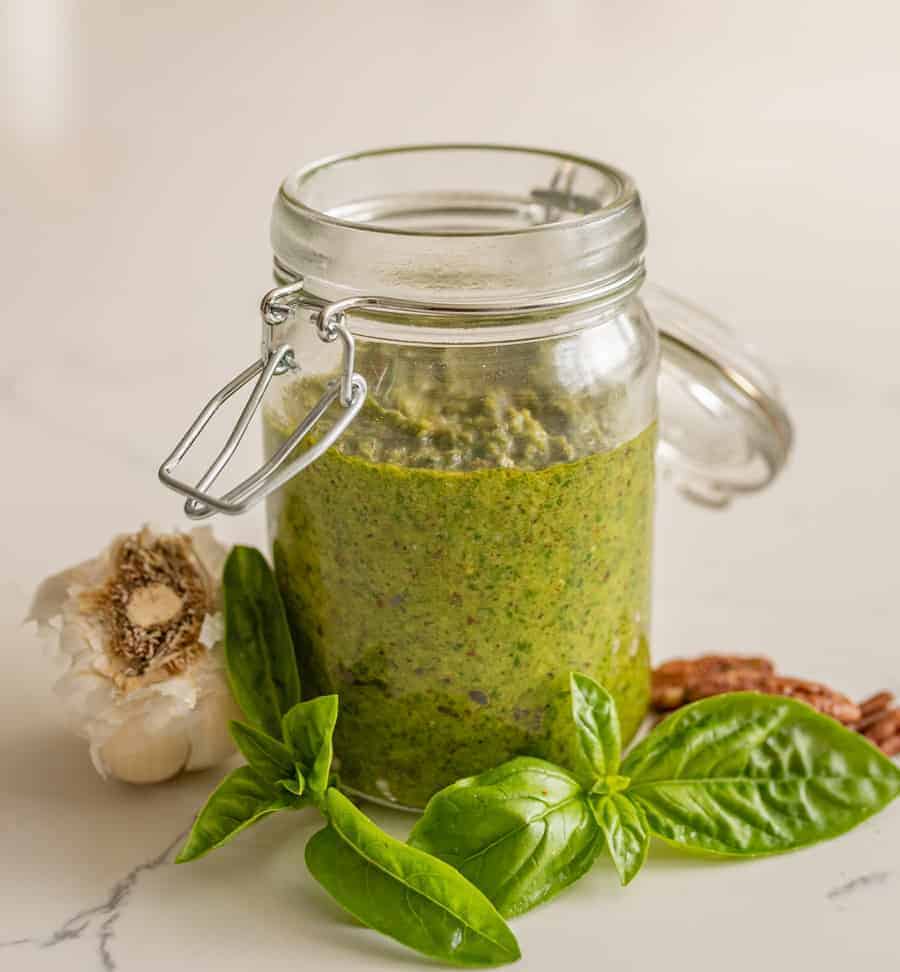
Expert Tips
- Make sure to use freshly grated parmesan. You don’t want to use any of the pre-grated or shredded stuff because it won’t give you the same texture or the best flavor.
- Any olive oil will do, but extra virgin olive oil will give the pesto a boost with its delicious flavor.
- When adding the additional oil, pour it in a small stream while the machine is running. It is sort of like making a vinaigrette – you want to give that oil time to emulsify and get that thick pesto texture.
- An easy way to freeze pesto for later is to put it in an ice cube tray, freeze, then pop the “pesto cubes” out and into a freezer bag to store.
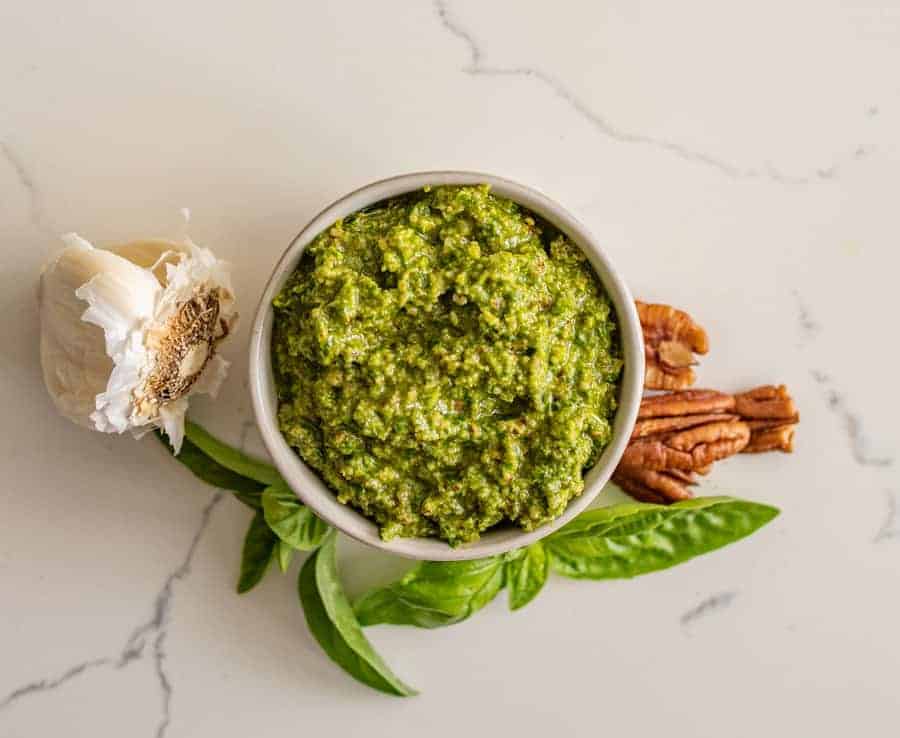
More Recipes to Consider
Recipe Collections
Zucchini Recipes
Chicken Recipes
Garlic Parmesan Chicken and Pasta (One Pot!)
Pasta Dishes
Easy Slow Cooker Vegetable Lasagna
Pasta Dishes
Pumpkin Alfredo
Did you make this recipe? Leave a ⭐️ review and share it on Instagram, Facebook, or Pinterest!
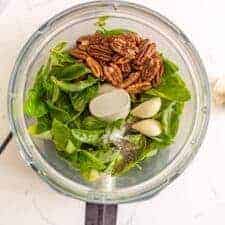
How to Make Homemade Pesto (without pine nuts)
Ingredients
- 2 cups fresh basil leaves
- 2 to 3 large cloves garlic, peeled
- 1/2 cup pecans
- 1/3 cup freshly grated parmesan, optional
- 1/2 teaspoon salt
- 1/2 teaspoon pepper
- 1/4 cup olive oil
- 1/4 cup neutral oil, such as avocado or vegetable oil
- Additional oil, if needed
- Additional salt and pepper, to taste
Instructions
- Remove any large stems (small stems are okay) from the basil, and add it to the bowl of your food processor or blender.
- Add the garlic, pecans, parmesan cheese if using, salt, pepper, and 1/4 cup of olive oil.
- Blend until the mixture starts to come together, scraping down the sides often.
- Add additional oil a little at a time until the mixture comes together, scraping down the sides often, until it becomes well-mixed but not too oily. You are after a paste or sauce texture that is a little on the thick side.
- Give it a taste, and add additional salt and pepper to taste.
- Store in an airtight container in the fridge for up to 10 days or in the freezer for much longer.
- Serve over hot pasta, toss grilled or roasted veggies with it, make a pesto sandwich with it, and it’s also great on chicken and fish.
Notes
- You have SO much flexibility with this recipe. Love cheese? Add 1/3 cup or more. Not doing dairy? You can totally skip the cheese. Add more or less garlic or salt to your liking.
- You sure can use traditional pine nuts, but I never have them and they are expensive. I love this recipe with pecans. I have also used pistachios (so good!), almonds, and walnuts with success.
- I like a light oil mixed with the olive oil so that the olive oil flavor isn’t too strong. If you love olive oil, feel free to use just olive oil.
- Feel free to scale this recipe up or down as needed. I make loads of this during peak basil season and just keep it in the freezer. It’s a little pop of summer when the snow flies.

